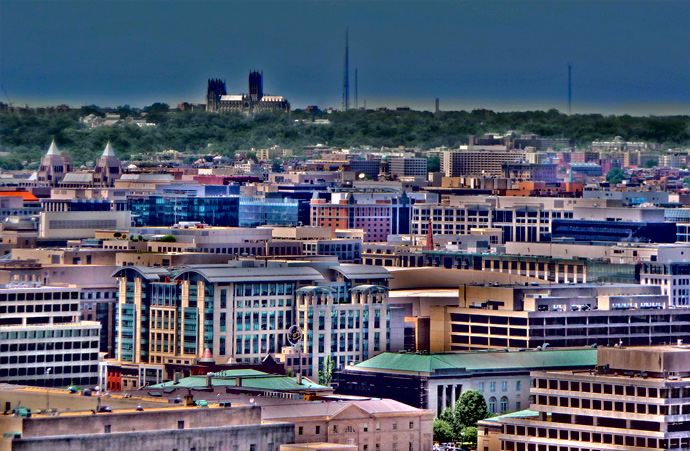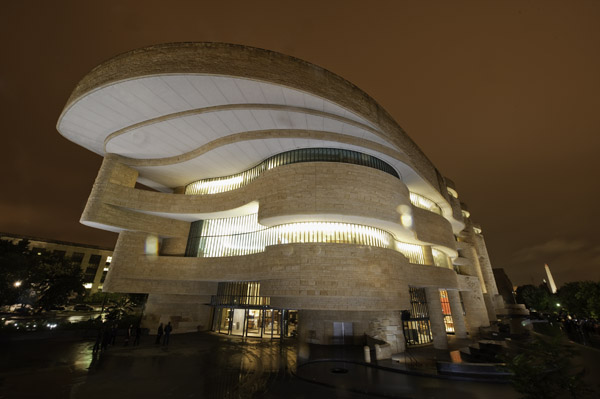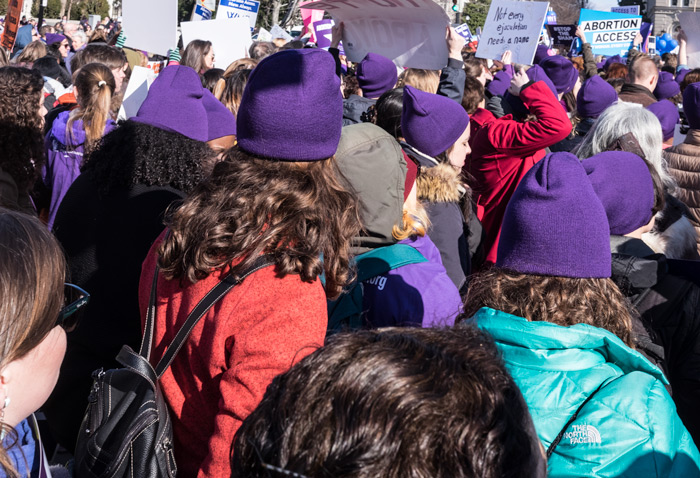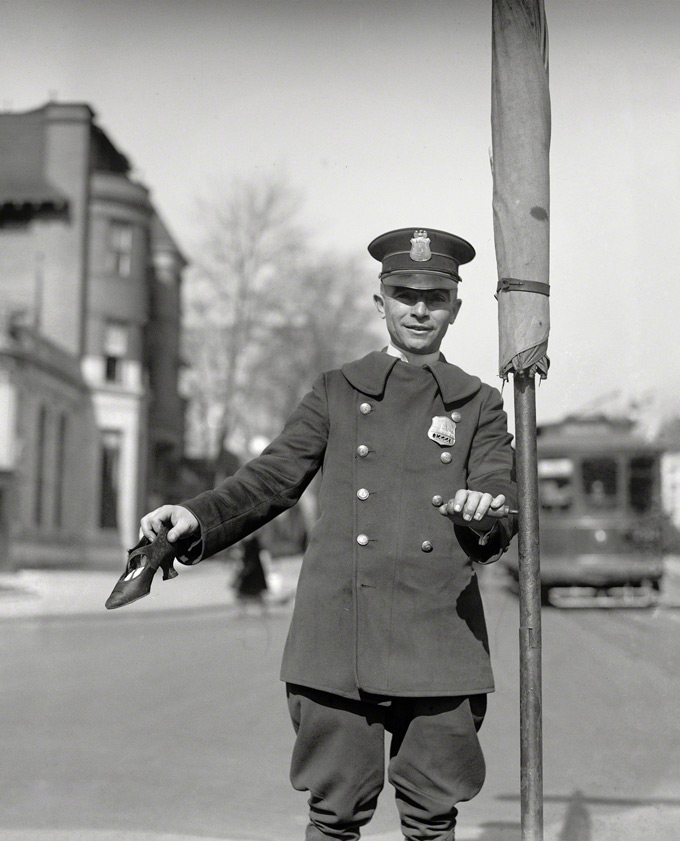Hole in the Clouds
Aug 23, 2009
Hank shot this unusual view of Washington, DC, last spring from the top of the U.S. Capitol dome. Almost all the buildings you see here represent the political sector known as K Street--corporate offices devoted to lobbying politicians and/or "complying" with government regulations. Corporations and professional associations built all these nice new buildings in the hope that proximity to government officials would help them make lots and lots of money.
What do they do in these buildings? They dole out money to congressmen and various campaign committees, to improve access and influence. They work with legislators and regulators to shape the scope and wording of laws and regulations. They coordinate publicity campaigns to influence public opinion in their favor. But mostly, they push papers around to keep business-government interactions running more or less smoothly.
Calvin Coolidge said it: The business of government is business. In this picture, you can see it for yourself.
At the top of the picture is the National Cathedral, which is arguably outside the K Street axis of operations.

Washington, DC
K Street
National Cathedral
(Image credit: Hank Stein)
Sep 25, 2009

I'm sure there are more than two stories that can be linked to this street corner in Washington, D.C., but I see two in the photo.
The first one is a tale of two gas stations: The year is 1925, cars have only been on the road for a few years, but already here we see a derelict gas station, rundown, boarded up, the gas pump already removed. The parked car may or may not be a junker, but it's not much of an advertisement for the carwash service. But look across the street, at the far right edge of the picture. You may want to enlarge the photo to see full detail. (Or ask me to send you the very high-resolution original photo, 2.6 MB file.) That's a brand spanking new Standard Oil Co. gas station, the original category killer--so Story #1 is about how Mr. Rockefeller probably put this guy out of business and blighted this corner of my hometown.
Story #2 is about the corner itself. It's 2nd Street and Massachusetts Avenue NW, which is stunning to those of us who feel they know Washington. Mass Ave is one of the businest streets in the city, and the intersection is in the heart of downtown, about four blocks from Union Station. In 1925, there wasn't even a line painted down the middle of Mass Ave. Furthermore, based on the trees and their shadows, we can deduce that the picture was taken in late afternoon or early evening--rush hour. Perhaps it was Sunday, but still--the wide-open emptiness is not consistent with our notions of a major downtown artery. This scene feels like a small town, or the edge of a city, not the center of the nation's capital, just eight blocks from the U.S. Capitol building.
What's there today? Nothing. Grass and a couple of curving walkways--I think the local term is pocket park. It's an unusual park, however, built on the air rights above the I-395 freeway as it dives underground just north of Massachusetts Avenue. Rumor has it that behind this park, they're planning to build offices and even stores and apartments, all on the I-395 air rights. This is said to be the biggest construction project in Washington right now that hasn't been suspended--maybe it hasn't been suspended, but it's not yet what they call shovel-ready.
And for what it's worth, the Standard Oil station isn't there any more either; that corner is occupied by a medium-sized brick office building that serves as Washington headquarters for a business association.
vintage
Washington, DC
cityscape
Standard Oil
cars
(Image credit: Nat'l Photo Co., via Shorpy)
Oct 2, 2009

A few days ago, the photo-science geniuses from Rochester Institute of Technology conducted their annual Big Shot, an experiment in painting with light. A scene is chosen--this year, the Smithsonian Museum of the American Indian on the Mall in Washington, D.C. The public is invited to participate by bringing handheld light sources, such as flashlights or candles. Streetlights, security lights, and other nearby high-tech sources of illumination are extinguished, so when night approaches, the scene gets darker and darker.
Inside lights are switched on to make the building glow in the dark. Then the crowd is arranged so that all the handheld lights paint the scene. This year, about 800 people participated, and after a 20-second exposure, the big shot came out pretty as a picture.
That's the Washington Monument in the background, leaning to the left because of distortion caused by the wide-open lens.
Washington, DC
cityscape
Smithsonian
night
(Image credit: Rochester Institute of Technology)
Mar 3, 2016
 Clearly, if you want a job doing news in front of a TV camera, you have to have that glow, along with blonde hair that stays perfectly in place even in the winds of March.
Clearly, if you want a job doing news in front of a TV camera, you have to have that glow, along with blonde hair that stays perfectly in place even in the winds of March.
These women were reporting on Wednesday's Supreme Court arguments in a Texas case severely curtailing access to abortion. In front of the Court building, they were surrounded by demonstrators, an estimated fifteen hundred championing reproductive rights and another few dozen with bullhorns screaming about God and whores.
Below are a couple of scenes of the demonstration, including some notable handwritten protest signs: "Not every ejaculation needs a name," and our personal favorite, "Why are we still talking about this?"


Washington, DC
demonstration
abortion
media
reproductive rights
(Image credits: Fuji T)
Mar 13, 2016

It has been suggested that here in this Washington, D.C., intersection in 1923, Officer Banks developed the protopye for a kind of traffic signaling that is still with us today.
When you see the shoe: Walk. No shoe: Don't walk.
Washington, DC
streetscape
police
traffic
signage
1923
shoe
(Image credit: National Photo Company via Shorpy)
Jan 25, 2017
 Notes from the Office of War Information, December 1943: "In the evening, Hugh Massman and his wife fold diapers. Joey's bureau drawer crib is moved to the side of their bed for the night."
Notes from the Office of War Information, December 1943: "In the evening, Hugh Massman and his wife fold diapers. Joey's bureau drawer crib is moved to the side of their bed for the night."
The Massman family lived in Washington in 1943 while Hugh, a petty officer in the navy, attended a specialized training program. Photographer Esther Bubley spent a few days with them for a feature story about military family life.
After the war, the family returned home to Montana, where they had seven more children.
Washington, DC
baby
World War II
1943
Hugh, Lynn, and Joey Massman
home front
(Image credit: Esther Bubley, via Shorpy)







